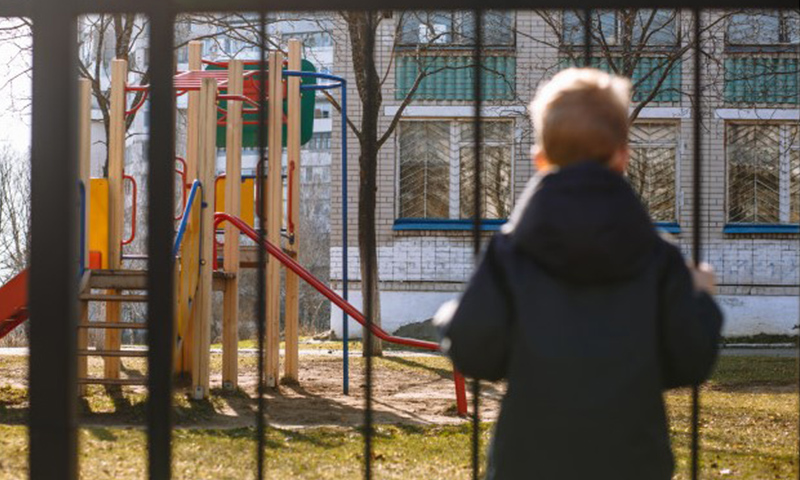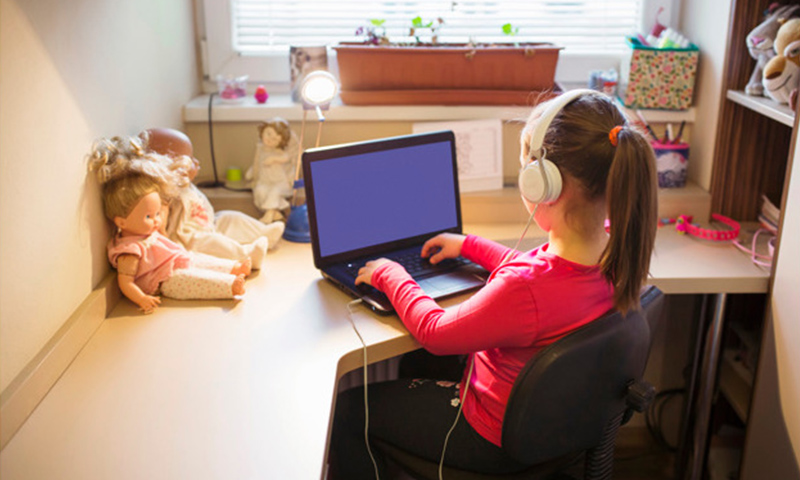Dr. Jeevanandam Jotheeswaran is a dedicated, resourceful, goal-driven educator and a researcher in Cognitive Computing professional with a solid commitment to the social and academic growth of student fraternity. He is an active moodle practitioner and consultant for many Universities across the globe. Dr. Jeevanandam holds more than 50 Certifications on various technologies and concepts. Having 20+ years in the industry and higher education, he has the right blend to serve in Edu Tech.
Shafali Kashyap is an experienced professional with 16 years of demonstrated history of working in the higher education sector. Skilled in outcome management, academic advising, student career counselling, higher education accreditations, leadership, and higher education administration, Shafali is a research scholar pursuing PhD focused on outcome mapping and quality monitoring in conventional and online learning.
COVID-19 and the worldwide lockdown have changed the way we look at work and education within a short time. One of the sectors most hard hit by the worldwide lockdown is the education sector. According to UNESCO, over 154 crore students are severely impacted by the closure of educational institutions across the world.
Girl education effort may be affected, leading to increased dropout rates and gender gaps in education. On the other hand, WHO’s latest update says that the virus will be with humanity for a long time. So the world needs to be cautious. But life’s movement cannot stop for an undefined time. Therefore, the Education From Home (EFH) may become the rule in the coming days.
The challenge faced by the world is the challenge to keep the doors of learning open. The worst affected has been the traditional school and college education. Firstly, as Stefania Giannini (Assistant Director-General for Education, UNESCO) says, the reduction in instructional time impacts learning achievement. It is challenging to measure losses, including inconveniences to families and decreased economic productivity as parents struggle to balance work obligations with childcare.

But as the German data scientist and Director of Organisation for Economic Co-operation and Development (OECD) Andreas Schleicher says, the “Real change takes place in deep crisis. You will not stop the momentum that will build.” Human survival instinct is making a lot of things happen during the pandemic, and so do the education sector. Both schools and college education has been taken online, even for government schools.
This has not been easy. The students, teachers, and the lawmakers had to get oriented to the idea of e-education within a short time. A survey of U.S. higher education leaders and practitioners shows that nearly 90 per cent of higher education institutions used some form of emergency distance education to complete the current semester. Around 56 per cent of faculty who moved courses online were using teaching methods they had never used before. In India, This number though less is the surge considerable. However, yearly exams could not be completed.
In India, private education across the country quickly moved to virtual classes on various online platforms. The government institutions too followed suit after some time. While many institutions adopted pre-existing platforms like MicrosoftTeam, Google Classroom, AMIGO, and many more, most adopted social media like WhatsApp to ensure teaching continuity.
The Challenge: Traditional Versus Online
What is the primary challenge for this transition? The answer is not technology but the changing of the mindset to shift to the virtual classroom from the physical classroom. But the pandemic did not give much time for the teachers to adapt to the new paradigm gradually. Teachers had to adapt to various teaching technologies quickly, and so did the pupils wherever virtual education has been adopted.
Further, remote learning increasingly relies on the reliable power supply and ubiquitous Internet connectivity which might be a far- fetched thing for Tier 2 and Tier 3 cities. Another challenge is that e-learning comes across as somewhat patchy and impersonal experience, which the participants need to get used to. Also, e-learning is likely to witness a high dropout rate due to the lack of atmosphere for studying. Students might tend to get distracted by gaming consoles, social media at home and might not feel a sense of community while taking online classes. These challenges can be met with technology itself by using similar technology used for staff monitoring.
Immediate Measures Taken for E-learning
The private schools quickly moved to e-learning mode using various technologies starting for Microsoft Team, Zoom, and Bluejeans, as well as WhatsApp (for sharing educational materials) to continue with education. It was a big challenge for the government institutions, still the semi-urban schools quickly caught-up. One of the top players of E-Learning, Amity Online has recently launched a Learning Management System (LMS) called AMIGO*. The government of India has also launched Vidya Daan App** to ensure continuity of quality learning.

The Hind Side: Reaching Out to One & All
Despite the desperate measures, it is still challenging to reach out to the total population of students through online media. First, the remote villages in India are however not equipped to technology and do not have proper infrastructure. At the base-level, the main problem is with internet connectivity and availability of tabs or smartphones for all pupils.
Secondly, UNESCO says, out of the total global students’ population, 74 per cents are girls and over 11 crores of these girls are living in the world’s least developed countries. Getting an education is already a struggle for them. In such countries, where girls’ education is secondary to boys, the girl child’s education is at risk. In such social setup, girls may face dropout compared to boys whose education will be given more preference primarily for economic reasons. Therefore, COVID-19 lockdown may reverse the 20 years of gains made for girls’ education.
The closure has also compounded educational inequities in another way. Financially sound families have resources to fill learning gaps and provide enrichment activities to children who cannot attend school than the poor. Fair policy and economic-packages to the marginal population have to be presented to fill this gap.
Long-term impact & Strategy in Education
A large section of the world will bear the economic crisis due to the pandemic for a long time. The education will take a long time to get back to where it was unless thoughtful measures are taken from now on. The right answer to the problem right now is e-learning. UNESCO calls for a six-point strategy to be adopted by the policymakers that include:
- Leveraging teachers
- Leveraging communities
- Adopting appropriate distance learning practices
- Considering the digital divide
- Safeguarding vital services
- Engaging young people
To achieve this, we need to ensure many-fold change.
- Outlook towards education: As Andreas Schleicher says, the change that takes place during the crisis is the real one, and one should go with the momentum. From the current scenario, it seems that the future of education will be blended learning (a combination of distance learning and traditional classroom learning.) For this, a change in outlook towards education, of the teachers, students, and policymakers is needed.
- Methodology: It will be a trial and error process, but the teaching methodology and course outline need to be redefined.
- Technology, platform & resource: India has already made progress in e-learning technology and platforms. During the pandemic, the industry is showing immense promise. Many ed-tech firms are offering free online platforms on attractive discounts. This has been met with overwhelming response by students as high as 25 per cent uptick in e-learning. However, to reach out to the marginal students, newer approaches need to be adopted by the governments.
Ed-Tech Platforms for Learning New Skills
COVID-19 is the most devastating pandemic, and employees are facing the genuine threat of layoffs as a result of budget cuts. To improve their job prospects in the post-COVID-19 world, they are seeking new skills. As challenge breeds opportunity, the ed-technology sector, not only the big players who have been there since the beginning of MOOC but new platforms are set to make new skills accessible across the globe. Start-ups are coming up with new platforms too.
What Next?
The ed-tech “movement” in 2020 was inspired by China’s Haidian district, which is home to a dozen universities and business firms like Xiaomi and Baidu. China is one of the most technologically advanced countries, and India is not far behind. Even then, the prospect of this is yet to be determined.
Some think that, after the pandemic, schools and colleges may be revolutionised by this experience. They may also revert to traditional mode. But in the world marked by rising unemployment and likely recession due to the pandemic will demand more. But what happens to education technology after the pandemic will partly rest on the quality of the technology itself.
To conclude, there are many unanswered questions at this point, but the world has always evolved after a crisis. Amidst indefinite closure of the educational institutions, policymakers and practitioners can need to look to lessons from the past crises to address the specific challenges faced by the underprivileged. UNESCO has launched a global education coalition to support countries in scaling up their best distance learning practices and reaching out to the downtrodden mass. The governments would need to work closely and collaboratively with international bodies like UNESCO, analyse the nation’s requirement to come up with the best and long-term solution to combat the present crisis as well as to safeguard against a similar or more severe crisis in future.
*AMIGO
As a gesture to assist institutions of India and other parts of the world in taking their students online with ease, Amity Online has opened up a user-friendly Learning Management System (LMS) called AMIGO for free of cost. Institutions / Departments / Schools / Teachers / Trainers can create their own LMS in minutes and go live within a flash time. AMIGO helps to take your students through an engaging learning journey with power-packed facilities such as Bulk course creation and easy backup, Collaborative tools and activities, Course Authoring tool as per four-quadrant approach, Course delivery using built-in innovative tools & resources.
**Vidya Daan Program
Vidya Daan will help individuals and organisations across the country to contribute e-learning resources in the education domain to ensure that quality learning continues across India.
Organisations can register and can nominate who can upload on behalf of the registered organisation. Contributions can be made by individuals, teachers, educationists, subject experts, schools, which have a valid registration. They can upload explanation videos, teaching videos, practise questions, competency-based items, lesson plans and such for class 1 to 12 for any subject as specified by the states/UTs under their respective projects. Such contributions must be open-licensed under the Creative Commons license framework and can be curated by the respective states/UTs & CBSE.




